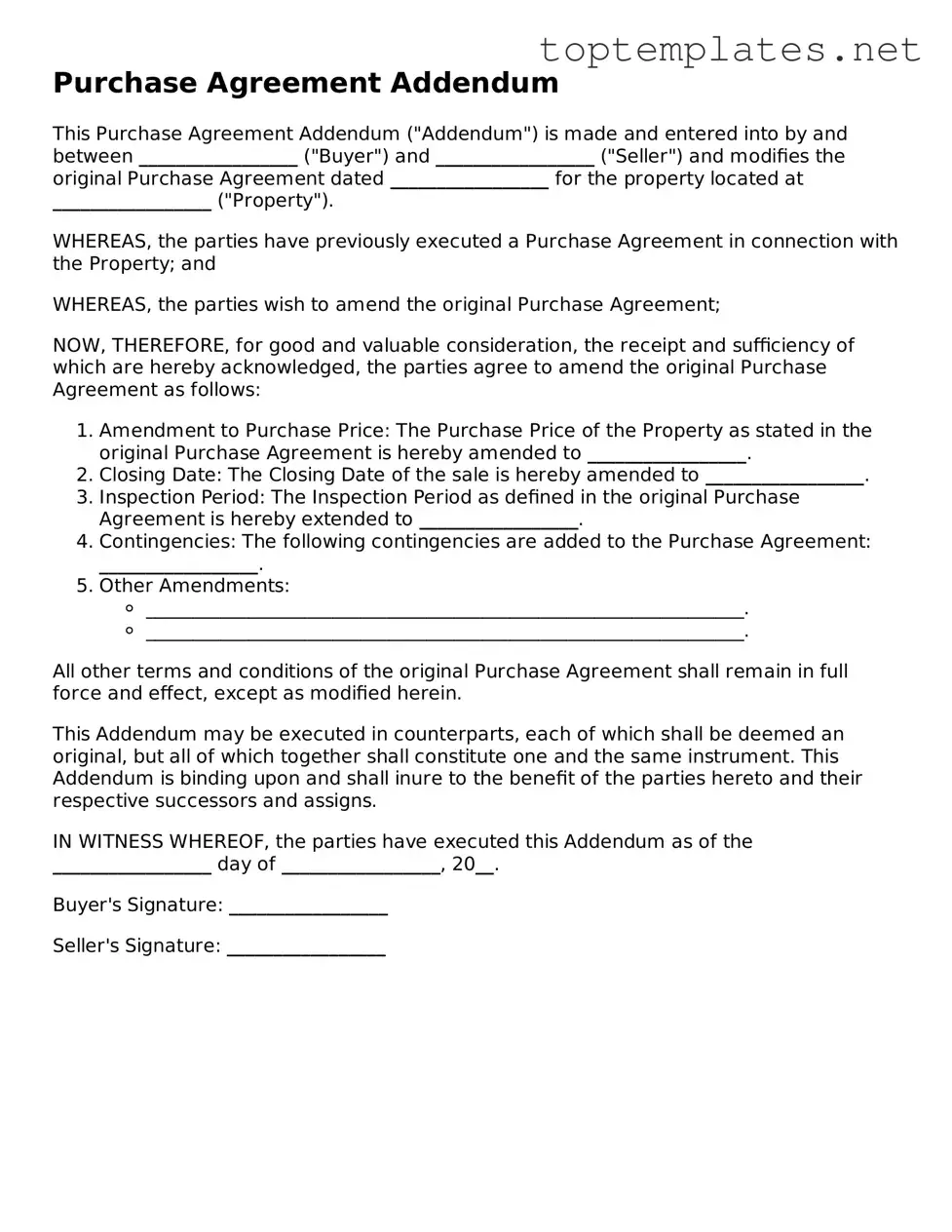Purchase Agreement Addendum
This Purchase Agreement Addendum ("Addendum") is made and entered into by and between _________________ ("Buyer") and _________________ ("Seller") and modifies the original Purchase Agreement dated _________________ for the property located at _________________ ("Property").
WHEREAS, the parties have previously executed a Purchase Agreement in connection with the Property; and
WHEREAS, the parties wish to amend the original Purchase Agreement;
NOW, THEREFORE, for good and valuable consideration, the receipt and sufficiency of which are hereby acknowledged, the parties agree to amend the original Purchase Agreement as follows:
- Amendment to Purchase Price: The Purchase Price of the Property as stated in the original Purchase Agreement is hereby amended to _________________.
- Closing Date: The Closing Date of the sale is hereby amended to _________________.
- Inspection Period: The Inspection Period as defined in the original Purchase Agreement is hereby extended to _________________.
- Contingencies: The following contingencies are added to the Purchase Agreement: _________________.
- Other Amendments:
- ________________________________________________________________.
- ________________________________________________________________.
All other terms and conditions of the original Purchase Agreement shall remain in full force and effect, except as modified herein.
This Addendum may be executed in counterparts, each of which shall be deemed an original, but all of which together shall constitute one and the same instrument. This Addendum is binding upon and shall inure to the benefit of the parties hereto and their respective successors and assigns.
IN WITNESS WHEREOF, the parties have executed this Addendum as of the _________________ day of _________________, 20__.
Buyer's Signature: _________________
Seller's Signature: _________________
